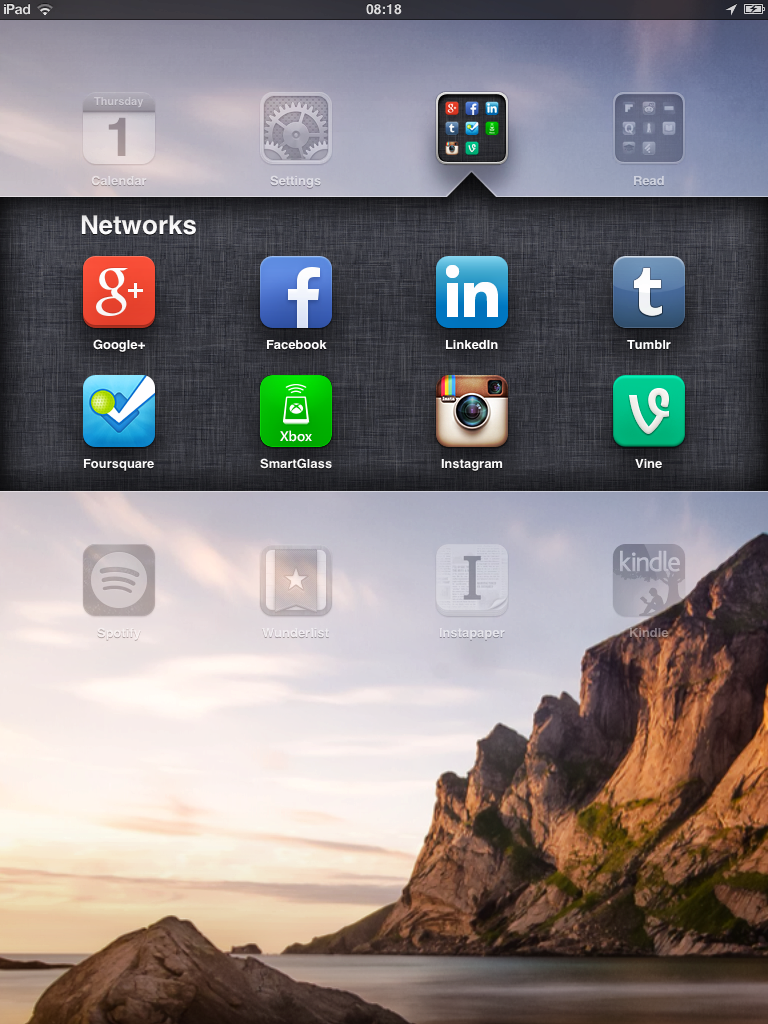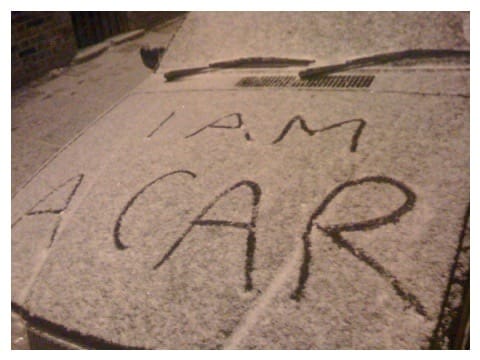A status update on a multi social network world
All the world’s a stage

The rise of mobile has enabled a promiscuity of social networks that didn’t meaningfully exist until very recently. Before, you were either on MySpace or Facebook. FriendsReunited or Bebo. But now that your smartphone carries all your closest contacts, you can download a new app, connect/ invite everyone you know and your network is right there with you.
It’s more and more common to have not just a stream of social updates now but a full landscape. What we have today, is almost like a manuscript — and I think some of the most interesting developments can be lumped into three categories that also demonstrate how the humble status update has evolved into something more.
So let’s look at actions, dialogue and illustration.
Action
Facebook updates were originally limited to “User is…” Arguably, this actual made creating statuses lower maintenance, since the formula was clear. How are you? I am X. Done. But it was also third person. This wasn’t publishing, this was narrating your life — like stage actions in a play. It was the prototype for the many actions that litter various networks today.
In Facebook itself, the Timeline design is a good illustration of this, applying that original design template with retrospect. Facebook is at a very interesting place in its lifecycle — the early adopters were university students and living in a world of “XX is…”, adding people as they met them and building a record of activity as they went.
But when it spread to the broader masses, anyone over the age of 20-something was instead going back and rebuilding their network and connections. So, away went “is” and in came a nostalgic diary of who did what, where and when. We’ve now come full circle, where the youth of today is populating Timeline as they go, leaving behind a clear list of these actions.
Dialogue
By contrast, Twitter didn’t offer such a helping hand. Where Facebook used a cultural confine to make statuses accessible, Twitter’s imposition was much more alien. Perhaps this makes sense when you consider that, as a mass SMS tool (as twttr originally was), this came with the territory.
But I think this basis in SMS also reveals one of Twitter’s greatest strengths. SMS was always about dialogue. By connecting a format dedicated to sharing information with a network of followers to receive it, the degree of response scaled up massively.
This is also the reason I personally find myself sharing many objects from other networks to Twitter — it’s still one of the most fundamental ways to say to a lot of people “hey, look at this.” It punctuates a lot of other channels I use, from my blog, through Instagram, Linkedin and G+.
In many ways, Tumblr feels like the spiritual successor — a Twitter more truly built for the age of the web. By broadening the scope of low maintenance sharing in a number of ways that are still unthreateningly prescriptive (quote, link, image etc) it keeps the virtue of Twitter and extends it more gracefully to a world where people share more than just text. But I’ve still yet to see true discussion flourish there like it does on Twitter.
Illustration
It’s hard to express the fleeting beauty of a moment in words. In fact, it’s hard enough to express anything meaningful in words without cliche (see that last sentence) and for most people, even scarier to share that to an audience. We can’t all be Keats.
On Facebook, photos were predominantly in retrospect e.g. here’s an album of last night. But Instagram made it current and transient— which, crucially, could only blossom in the mobile, multi-network world. Foursquare supplies the ‘action’ data, Twitter often brings ‘dialogue’ and it’s all glued together by your mobile contacts. Having emerged most recently, it’s a great demo of how a user’s range of networks come together in one place..
It’s acquisition by Facebook also adds up perfectly — the current Facebook “XX is…” generation illustrates their actions as they go, without the need for retrospect. I wonder how many university students today actually take digital cameras out with them like I did.
Which has the most value?
As this multi-network world evolves, more and more opportunities are going to arise to create value from the information they contain. Of these three examples, I think if I could invest $1m in any one of them, my long term money would be on networks that capture the “actions”. I think that’s where the hardest value to emulate sits.
As the most semantic, it’s not only a better representation of what people actually do (vs just what they say) but it’s the least transient of the three. It’s also less high maintenance, more universal to both young (is) and old (was) users of these networks. And it includes a spectrum of possibilities that future-proofs it for those who are still in the “is” generation. e.g. location services being used to tag Instagram.
When you combine the aspects I’ve described above, you get an outline of a person’s life. What did they do? What did they say? What did it look like? No doubt there are more examples out there but to me, these three represent how this area has developed in recent years and perhaps hint at what will remain important longer term.
With thanks to Danny Whatmough and Sarah Porter for reading an early draft.

